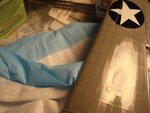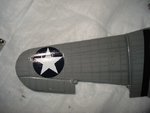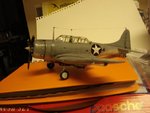Airframes
Benevolens Magister
Good point. It's best to let the Future harden for at least 24 hours before doing any decalling, even without decal solutions. If the surface does go cloudy, let it dry, and apply another coat of Future, which should rectify the problem. To be honest, I only use Micro Sol, having discovered, many years ago, that 'Set' didn't really have any big advantage, as the 'Sol' does the same job, but may take a little longer to settle.



